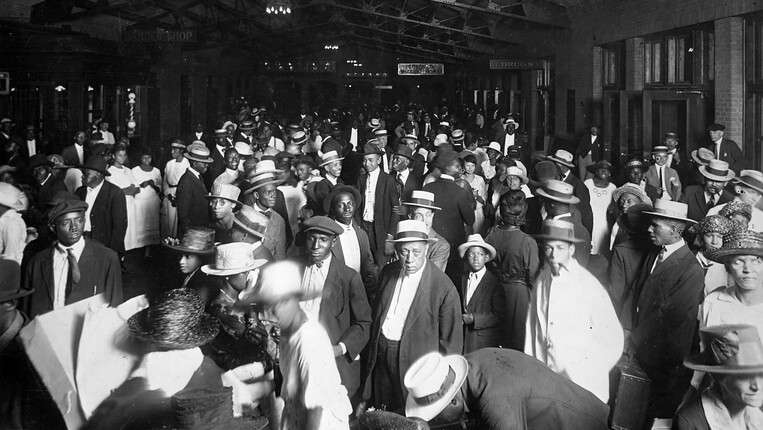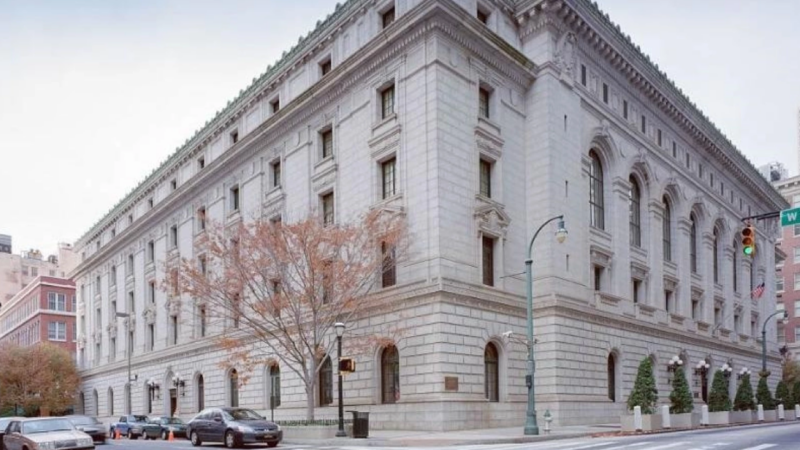
The Great Migration was the movement of roughly 6 million Black people from the South to the North, Midwest, and West between 1916 and 1970, making it one of the largest internal migrations in U.S. history. However, many contemporary historians overlook the fact that this migration was largely sparked by a series of events rooted in Black Jacksonville’s local resistance to Jim Crow-era segregation. In honor of Black History Month, here are six key facts that highlight Jacksonville’s pivotal role in reshaping the cultural demographics of the entire country.
1. Jacksonville was an early 20th century Black metropolis

Founded by Isaiah D. Hart in 1822, Jacksonville grew into an antebellum river port where enslaved African laborers worked as loggers, turpentiners, pilots, stevedores, carpenters, masons and mill hands. It was also a hub for shipping agricultural products from surrounding plantations to market. After the Civil War, Jacksonville developed into a major regional railroad center and a popular tourist destination during the Gilded Age.
For Gullah Geechee descendants in Florida, Georgia and South Carolina, Jacksonville was known as the “Magic City” during an era when African Americans flocked to the city seeking economic opportunities. By 1900, African Americans made up 57% of Jacksonville’s population, setting it apart from the racial demographics of other Southern cities at the time.
2. Home to the largest train station south of Washington, D.C.

In 1893, Henry F. Flagler established the Jacksonville Terminal Co. in LaVilla, just west of Downtown. Officially incorporated on April 7, 1894, the company’s Union Depot passenger railroad station opened its doors on February 4, 1895. By 1912, at least 92 trains passed through daily, and the city made plans to construct what would become the largest train station south of Washington, D.C. In 1915, New York architect Kenneth Murchison was selected to design the new terminal.
Murchison’s early major commissions were for railroad stations for the Pennsylvania Railroad. Among the stations he designed were the Delaware Lackawanna Station in Hoboken, New Jersey; the Lackawanna Terminal and the Lehigh Terminal in Buffalo, New York; and Pennsylvania Station in Baltimore, Maryland. For Jacksonville’s terminal, Murchison drew significant inspiration from the design of New York’s Pennsylvania Station.
As a transportation hub, Jacksonville became the focal point of the migration during the station’s expansion. Between 1916 and 1920, the city lost more than 6,000 of its 35,000 Black residents to the Great Migration. An additional 14,000 people from surrounding rural areas passed through the station en route out of the state. Studies show that the largest proportional movements of African Americans in the South during this period occurred from West Florida, Tampa and Jacksonville.
3. Pennsylvania Railroad recruits Jax’s disenfranchised Black labor force

Before World War II, railroad and manufacturing companies in Northern cities relied on immigrants as their primary labor force. When the war began in Europe, the flow of immigrants to the country halted, prompting these industries to turn to African Americans in the South to fill jobs needed for their continued growth.
Around this time, the Jacksonville Terminal Co. employed more than 2,000 people, making it the city’s second-largest employer. Many of these workers, including Pullman porters, section hands and firemen, were African American.
In early 1916, the Pennsylvania Railroad began recruiting Black laborers from Jacksonville by offering higher wages and free transportation to the North for those willing to work on the railroad. The New York Central Railroad quickly followed suit, hiring 500 men from the city in June 1916 and a total of 1,500 over the following months.
With recruiting agents offering $6 or $7 a day — compared to less than $1 a day in Jacksonville and surrounding rural areas — many African Americans were eager to leave. By 1918, more than 12,000 Southern African Americans had taken advantage of the Pennsylvania Railroad’s free transportation program to the North.
4. City Hall attempts to stop the movement

As thousands of underpaid African American laborers resisted local segregation by abruptly abandoning the city, Jacksonville’s economic backbone began to crumble. Soon, local turpentine and lumber companies complained that their cheap Black labor force was being lured away by the promise of better wages and improved working conditions in the North.
In an effort to stem the exodus, Mayor John E.T. Bowden and the Chamber of Commerce met with members of the Negro Board of Trade, urging them to help discourage migration. The Negro Board of Trade complied, publicly condemning the departure of Black workers. However, their words fell on deaf ears.
Within a week, 11 union leaders representing Black stevedores, plasterers, carpenters, painters and bricklayers denounced the statement, arguing that it did not reflect the views of Black laborers in Jacksonville. Meanwhile, from New York, James Weldon Johnson publicly voiced his support for those choosing to leave, as he had done years earlier. Johnson believed migration benefited all and argued that if the South wished to retain its African American workforce, it needed to ensure fair treatment and impartial enforcement of the law.
5. Role of the Chicago Defender

Established in 1905 and known as “America’s Black Newspaper,” The Chicago Defender quickly became the nation’s most widely circulated Black-owned newspaper. Its founder, Robert Abbott, was born just north of Jacksonville in St. Simons Island, Georgia.
African American Pullman porters played a crucial role in the paper’s expansion across the American South, distributing and smuggling copies on trains. By 1916, the Defender had reached a circulation of 50,000.
Initially, Abbott encouraged African Americans in the South to stay and fight for their rights. However, his stance shifted after learning about an incident in Jacksonville when an entire crew of stevedores abruptly abandoned their employer, leaving the city’s docks without a workforce the next day. Seeing that as a powerful economic tactic against the South, Abbott began using his newspaper to aggressively promote migration.
Credited with playing a major role in the Great Migration, the Defender saw its circulation soar past 200,000 by the early 1920s, helping to make Abbott one of the first self-made African American millionaires in the country.
6. Bound for the Promised Land
-L.jpg)
“From Florida’s stormy banks I go; I’ll bid the South good-bye; No longer shall they treat me so, And knock me in the eye. The Northern States is where I’m bound…”
One could argue that poet Matthew Robert Ward’s Bound for the Promised Land was as influential in shaping the U.S. as James Weldon and John Rosamond Johnson’s “Lift Ev’ry Voice and Sing.”
Born in Pensacola, Ward lived on Jacksonville’s historic Eastside for 32 years at 847 Oakley St. On November 11, 1916, his poem “Bound for the Promised Land” was published in The Chicago Defender, the nation’s leading African American newspaper. The poem inspired a wave of migration, prompting more African Americans to leave the South than at any previous time in U.S. history.
Ward’s poem urged African Americans to escape the racial discrimination and rampant lynchings of the South and seek better jobs and living conditions in the North. The impact was profound. In Jacksonville alone, more than 6,000 African Americans left the city. In places like Savannah, authorities even arrested individuals for reading Ward’s poetry, accusing them of inciting riots by encouraging the mass departure of Black residents in search of a better life.
Despite efforts by Jacksonville’s leaders to curb the exodus, the Great Migration became one of the largest movements of people and acts of Civil Rights resistance in American history. Between 1916 and the 1970s, approximately 6 million Black Americans relocated from the South to the North, Midwest, and West, reshaping the nation’s social and economic landscape.







